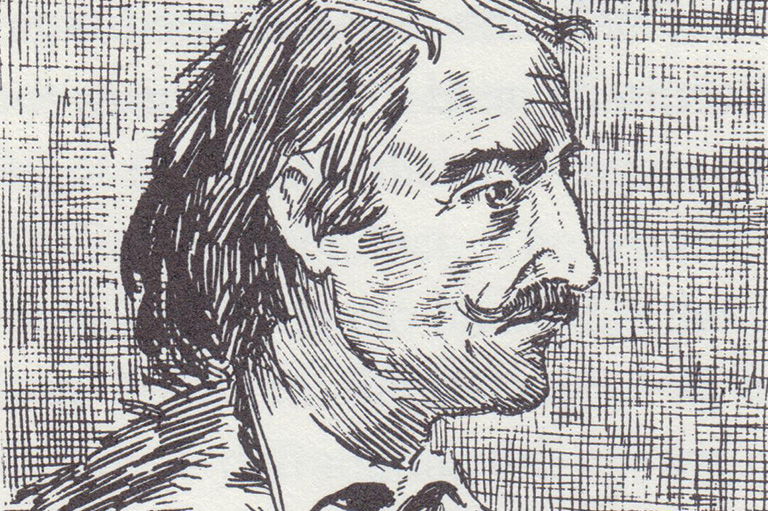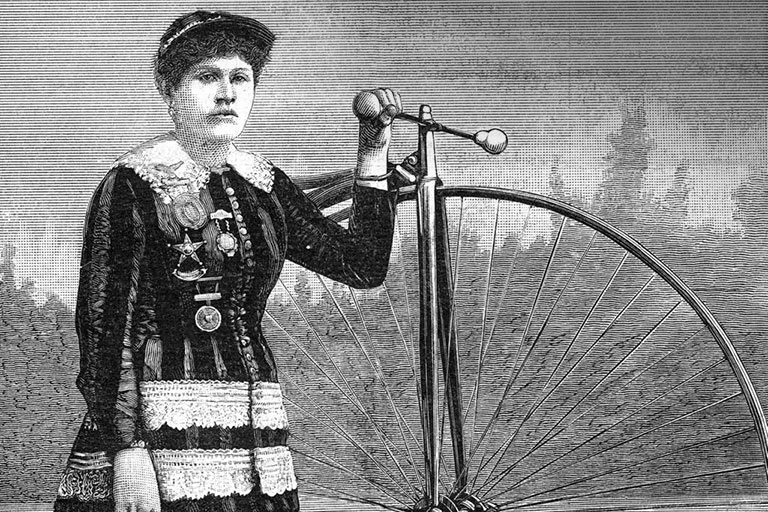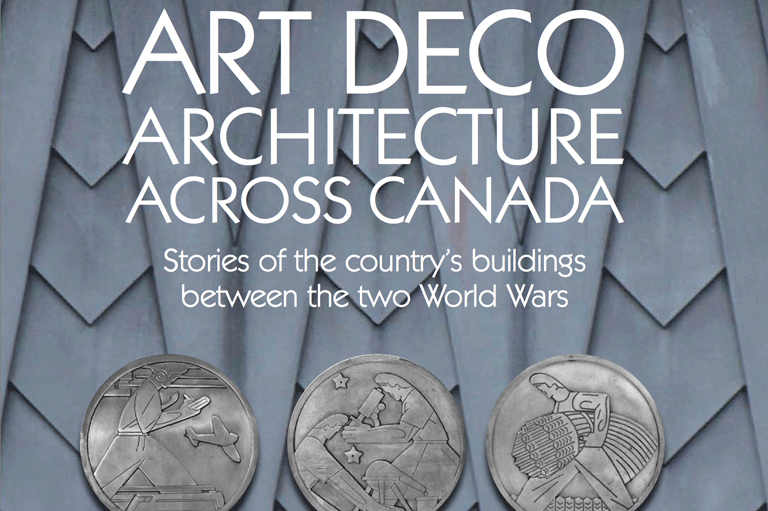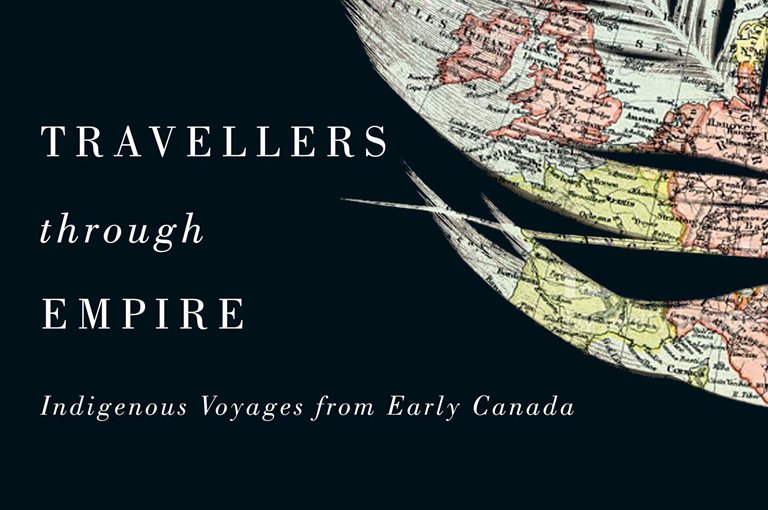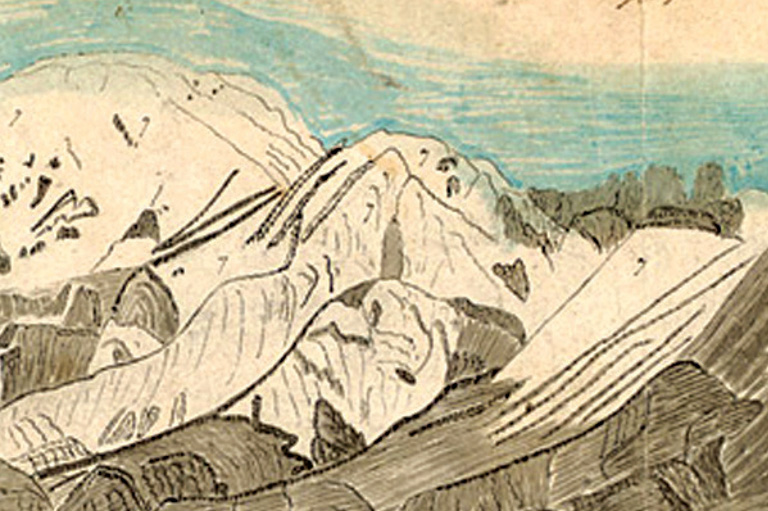Cultural Manoeuvres
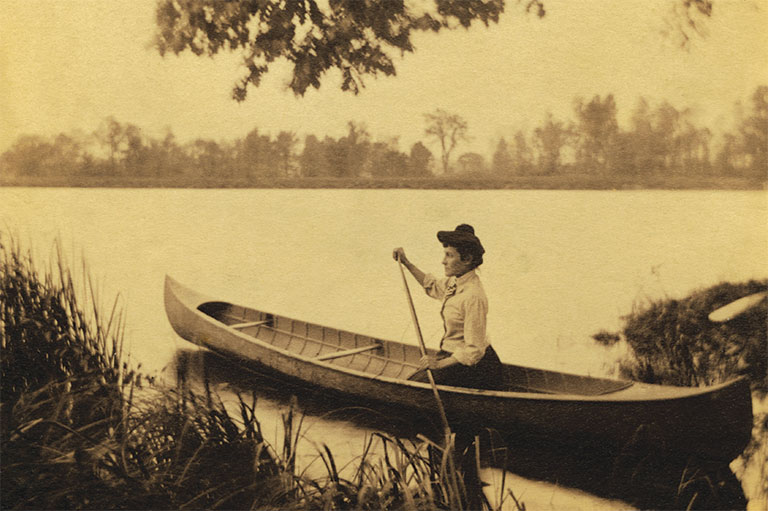
The symbols by which we understand our country and ourselves have histories that are more complicated than we might often realize or consider, and Canadians may have very different appraisals of and feelings toward any one symbol. In the new book Symbols of Canada, editors Michael Dawson, Catherine Gidney, and Donald Wright take the opportunity to present stories about the pasts and possible futures of symbols including the beaver, the totem pole, hockey, the Canadian Pacific Railway, and Anne of Green Gables.
They say their book “invites readers to explore the ways in which Canadians employ symbols, are shaped by symbols, and (although this might seem un-Canadian) argue over symbols.” This is something they hope will allow us “to better understand Canada’s past and present — and to anticipate and shape its future.”
In a chapter about the canoe, part of which follows here, sports and leisure historian Jessica Dunkin considers the history of the iconic watercraft, from the variety of designs and uses produced and made by First Nations living in different environments, to ways the vessel was used by settlers for work and leisure, to the canoe’s importance as part of the present-day Indigenous reclamation of traditional practices and relationships with the land. Her book Canoe and Canvas will be published in 2019.
The canoe is routinely understood as “one of the great Canadian icons,” a tool of diplomacy and cross-cultural collaboration that made this place called Canada possible, a humble craft that connects Canadians to wild places and rewards determination and hard work. Such representations overlook how the canoe as a physical object and symbol has participated in the expansion of a colonial market economy, displacing Indigenous communities and fuelling resource extraction. They also allow a very particular activity — contemporary recreational canoeing is dominated by middle-class white people — to stand in for the nation. A closer look at the canoe as an object and symbol, focusing on themes of appropriation and settler colonialism, work and recreation, and Indigenous resilience and resurgence, reveals the multiple divergent meanings attached to the small craft.
The stereotypically Canadian canoe is a red sixteen-foot Prospector. One hundred years ago, it would have been made of cedar and canvas. Today, it is more likely to be moulded from a composite like Royalex or Kevlar. It likely has two seats, and its occupants propel it with long, single-blade paddles. In reality, there has always been much greater variation in the size, shape, and materials of canoes. This is especially true of canoes built by Indigenous nations.
The different styles of canoe are as numerous as the meanings attached to them, the richness and complexity of Indigenous canoeing traditions reflecting the richness and complexity of Indigenous cultures, cosmologies, and relations with the land. More than tools of transportation, canoes are commonly understood as living things with spirits. The First Nations of the Pacific Coast, including the Coast Salish, Kwakwaka’wakw, and Haida, transform giant cedars into ocean-going crafts of different sizes through a process of shaping, hollowing, steaming, and carving. River canoes are typically made of deciduous trees, using a similar process. Each nation has its own designs, which are uniquely suited to local conditions and uses. Alongside totem poles and plank houses, canoes are a form of monumental art on the Northwest Coast, symbols of clan and community.
The most common traditional canoe style on the continent, owing to the extensive range of Betula papyrifera (paper birch), is the birchbark canoe. Here again there is diversity within and between nations, reflecting local materials, needs, and cultures. The Mi’kmaq of the Atlantic coast build sleek oceangoing birchbark canoes with low, rounded ends that avoid catching the wind and raised gunwales to protect the occupants from waves. One of the canoe styles favoured by the Eeyouch (Cree) and Innu in what is now northern Quebec and Labrador has a steep rise along the keel line so that the bow and stern are as much as a foot higher than the boat’s midpoint. This sharply rockered style is highly manoeuvrable and well suited to river travel.
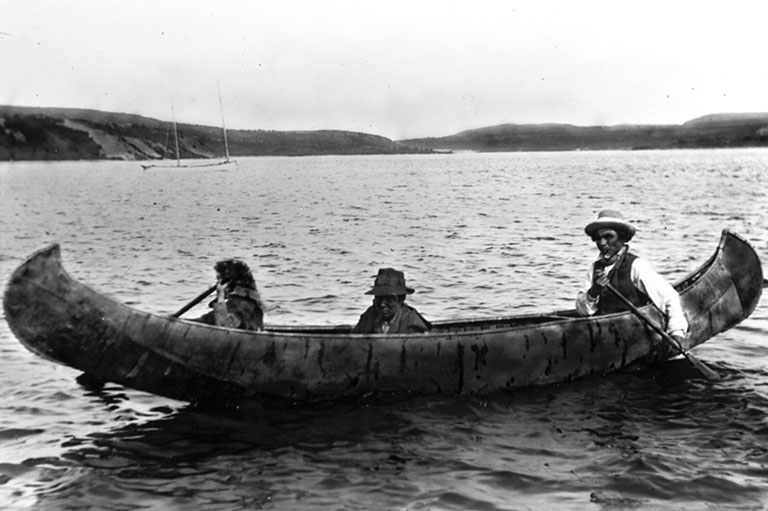
Prior to contact, canoes allowed Indigenous nations across the continent to move through their homelands in search of food, people, and trade goods. Europeans arriving in North America from the sixteenth century onward survived and later flourished because they adopted Indigenous technologies, chief among them the canoe. The canoe enabled explorers, missionaries, voyageurs, surveyors, and settlers alike to travel to the many corners of the continent, which in turn provided them with access to people and resources. The canoe, in other words, enabled the expansion of European economies and the colonial state, expansion that infringed with devastating consequences on the lives, lifeways, and lands of Indigenous peoples.
In Canada, the canoe has long been associated with the fur trade and the romantic figure of the voyageur. The design of canoes used to transport people and pelts across the vast interior of North America from the seventeenth to the nineteenth century was borrowed from Indigenous watercraft. Most were constructed of birchbark held together by spruce root, stretched over a wooden frame, and sealed with spruce or pine gum. However, boats built for the fur trade were often much larger than the birchbark canoes used by Indigenous nations. The largest of the voyageur canoes, the canots du maître, were typically thirty feet in length and four to six feet wide at the midpoint. Powered by five to eight paddlers, these canoes could carry up to five tonnes of cargo. With few exceptions, fur trade canoes were built by Indigenous people, and Indigenous people, especially the Métis, often paddled the large crafts as they journeyed between metropole and hinterland. …
The canoe is rarely imagined as a tool of surveillance and state formation, even though it was vital to surveying and mapping the territory that in 1867 became the Dominion of Canada. The Geological Survey of Canada was created in 1842 to generate a detailed geological assessment of northern North America. Prior to the 1930s, when planes took over as the primary surveying tool, canoes, often propelled by Indigenous paddlers, ferried white surveyors and their equipment through the interior. Canoes remained indispensable to surveying well into the twentieth century. … The surveys and maps generated in the wake of these canoe journeys produced knowledge about the Canadian territory, which facilitated further white settlement, resource extraction, and industrial development.
For much of the canoe’s history, paddling for pleasure was secondary to more utilitarian pursuits, such as harvesting or transportation. Today, however, the canoe is most often imagined as a recreational craft. The recreational canoe has its roots in the mid-nineteenth century. One of the epicentres of this transformation was Peterborough, Ontario. Early white settlers in the area bought birchbark canoes from Anishinaabe builders. Later, they experimented with constructing their own craft in the form of dugouts, also modelled on Anishinaabe boats. Author Susanna Moodie described paddling and sailing for pleasure on Lake Katchewanooka in the 1830s. As early as 1849, settlers in the region were organizing canoe races with separate categories for “Indians” and “white men.” A nascent canoebuilding industry emerged in Peterborough in the 1860s. By the turn of the century, the Peterborough Canoe Company and others were supplying canoes to paddling enthusiasts near and far. …
It is no coincidence that at the same time that Euro-Canadian canoeists were taking to the water in boats appropriated from Indigenous nations, the Canadian state was implementing the Indian Act, a comprehensive set of laws introduced in 1876 to destroy Indigenous cultures and assimilate the continent’s First Peoples into mainstream settler society. Residential schools, forced settlement on reserves, the outlawing of cultural practices such as the potlatch, and the destruction of traditional economies, all profoundly affected Indigenous lifeways, including the construction and use of canoes. …
While it is important to map the appropriation of the canoe by Euro-Canadians, and to detail how the canoe has been a physical and symbolic tool of settler colonialism, there are other stories to tell. Indeed, the renewal of canoeing traditions in Indigenous communities in recent years is part of a larger wave of Indigenous resurgence. Nations are reasserting their sovereignty, reviving traditional economies and forms of governance, revitalizing languages, and reclaiming cultural practices.
The renewal of canoeing traditions is part of a larger wave of Indigenous resurgence.
Given the centrality of the canoe to many Indigenous cultures, it is no wonder that boat building has been an important part of Indigenous resurgence. In Mi’kma’ki, master builder Todd Labrador has spent years learning how to construct birchbark canoes in the old way. Todd’s great-grandfather, Joe Jermey, was also a master builder; he died the year after Todd was born. Though Todd’s father Charlie never built a canoe, he was able to pass on what he learned from Joe, such as how to gather birchbark and spruce root, and how to bend wood for the frame. The rest Todd has gleaned through the careful study of photographs, consultations with Elders, and trial and error. Todd has built a number of canoes in the community. In 2016, for example, he worked with the Bear River First Nation in Nova Scotia to construct a birchbark canoe as part of Seven Paddles, a program that seeks to revitalize traditional canoe routes, while also passing on Mi’kmaw culture, traditions, and stories. Similar canoe-building projects have taken place in Indigenous communities from southwestern Ontario, to the northern territories, to the Pacific Coast over the last three decades. Canoe travel has been an equally important part of cultural revitalization. …
The canoe is an object with a complicated past. It has long been, and continues to be, a physical and symbolic tool of settler colonialism. But it also remains a symbol and tool of Indigenous nationhood, resilience, and resurgence. … For settler Canadians, attending to the past and present of canoe colonialism is an important part of decolonizing the canoe and nurturing respectful relations between Indigenous and non-Indigenous peoples in this country, but it is only a part. To be truly transformative, education must be accompanied by action. For settler canoeists, this might begin by building relationships and cultivating ethical paddling practices. On whose territory do you wish to canoe? How does that nation understand respectful relations with the land, and what are your obligations as a visitor? Is that nation fighting to protect their territory or to gain access to their territory? How can you support them? Of course, these questions are just a beginning. As Leanne Simpson reminds us, the canoe is but one of many things stolen from Indigenous peoples. True reconciliation requires the full restoration of land and lifeways to Indigenous nations.
Themes associated with this article
Advertisement
You might also like...

Our online store carries a variety of popular gifts for the history lover or Canadiana enthusiast in your life, including silk ties, dress socks, warm mitts and more!

